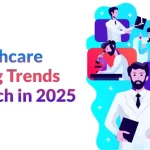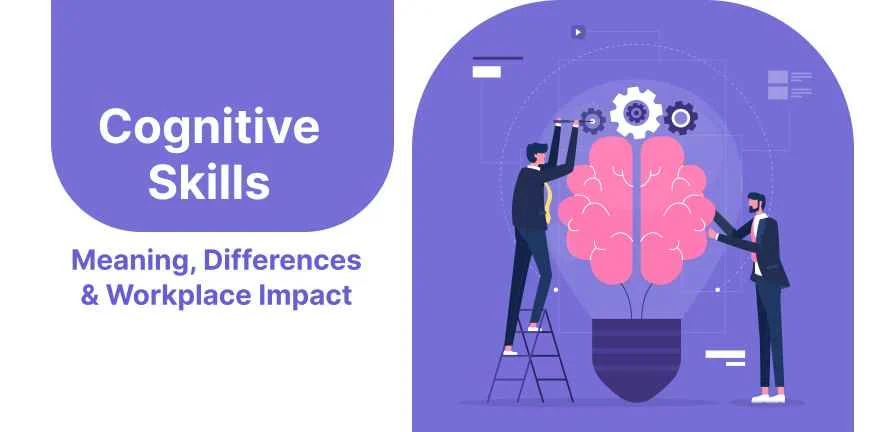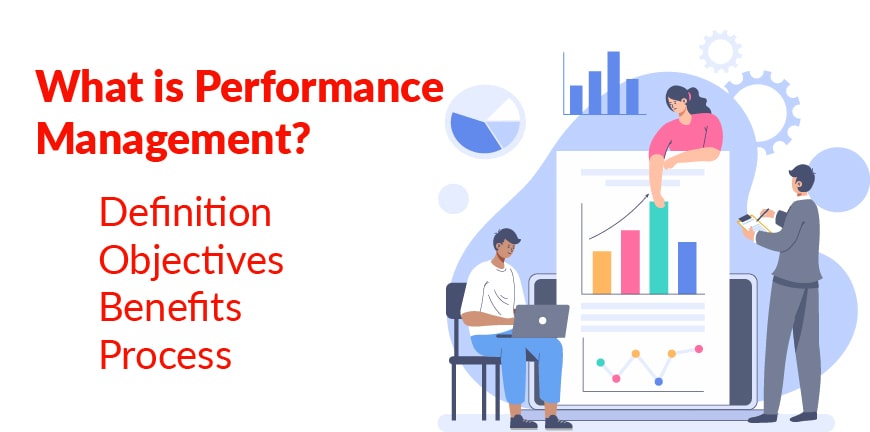
8 Healthcare Staffing Trends to Watch in 2025
15/09/2025
Payroll Manager Job Role | Duties & Responsibilities
15/09/2025In 2025, the definition of leadership has transformed, and leaders do not follow the old way of imposing unnecessary authority or follow the path of hierarchy. Times have changed and so has the mindset. Like Charles Darwin said, “It is not the strongest of the species that survive, nor the most intelligent, but the one most responsive to change.”.
Today, leaders are expected to lean towards the humane side of work systems, striving to make a difference, and possessing qualities like a sense of sympathy and purpose, and a sharp outlook.
According to a survey, 61% of Indian professionals report high or complete trust in their leadership—outpacing APAC (57%) and global (49%) averages. Transparency is key: 65% describe their organizations as open and communicative.
As the job landscape experiences a massive tide of metamorphosis with technology taking over, manpower expectations changing, and global upheavals, you as a leader must put your best put forward by staying receptive and well prepared to face the brand-new challenges. Develop new skills and perspectives, grow exponentially as future leaders.
What are the Leadership Trends in 2025?
Let us walk you through some of the significant leadership trends for 2025 that craft the future of work.
1. Compassion-Powered Leadership
Employees today are seeking leaders who put them first and do not consider them to be mere resources. Modern work landscapes have become hubs where employees expect their leaders to express genuine concern.
Good leaders must be aware of the situation of team members, including their mental well-being; they must encourage team members to share ideas and input, and make them active participants in the planning and policy-making processes whenever required. Leaders prioritizing kindness and togetherness create faithful and sustainable teams.
2. Leadership in Hybrid Settings
Current trends in leadership include working models completely shifting to a remote and hybrid way of working, which is likely to be the standard model. Say goodbye to the office walls. This means leaders must develop new skills that involve not just managing the conduct and performances of employees but also handling teams across borders. To excel in this aspect, they need to foster connections, equitable structures, and build trust in a digitally powered setup. Leading diverse teams across geographies means teams means nurturing communication and collaboration beyond borders.
Use Case- HSBC’s Flexible First policy covers over 200,000 employees globally. It combines hybrid and remote flexibility, investment in collaboration tools, and significant real estate consolidation.
3. Administering AI Responsibly
Artificial Intelligence is a phenomenon revolutionizing sectors and changing the ways by triggering efficient, effective, and smart efficiency, innovation, and smarter decision-making. However, with this transformative power comes profound responsibilities.
As AI systems increasingly seep through the various functions of hiring, customer relations, financial planning, and even healthcare, the ethical repercussions need to be understood and controlled. Leaders must be aware of AI technology, their way of working, and where they are deployed.
Modern leaders not only adopt the latest technologies, but they must also discover transparent and responsible ways to comprehend and share with their teams and partners about the functioning of the technologies.
4. Learning and Evolution
Today’s business environment is evolving unexpectedly, and there are several shifts affecting businesses. There is a constant rat race, and leaders cannot afford to pause. They must commit to learn continuously, imparting knowledge. It can be adjusting to new-found technology, developing cross-operational know-how, etc.
Learning must be a priority, with leaders empowering their teams to upgrade themselves, learn new skills, and grow. The learning mindset must be a constant, and leadership must enable manpower and teams to adjust to any circumstances and unprecedented changes with adequate knowledge and agility.
5. Sustainability and Purpose for Growth
In today’s business landscape, profit-making is not the only factor that investors, shareholders, clients, or employees look at. It is more than financial performances. Leader’s today is expected to incorporate eco-friendly practices and ethical systems into the core of their business functions.
A robust design with positive social implications is essential for organizations to flourish, not only in their business environment but also as part of the community.
Leaders prioritising sustainability and advocating social responsibility in their business structures stand out as individuals who are above business profitability. They project that their firm supports something more precious and for a bigger purpose.
This way, leaders are not just setting an example for their consumers, employees, or stakeholders but are also attracting best-in-class talent who are keen on working with organizations that cater to their value systems.
Use case- Did you know? IKEA has committed to becoming climate-positive by 2030. It has installed over 1.5 million solar panels and operates more than 500 wind turbines
6. Creating DEI Centric Cultures
In 2025, DEI is about ensuring that equal representation is incorporated at every stage of the growth process of an organization. Leaders must ensure that the programs designed for the enhancement of employees and teams in a company are inclusive, reflecting a diverse workforce.
Leadership must be transparent with employees when it comes to the fair payment process of salary, building organizational cultures where every individual can contribute to the operational efficiency equally.
They can freely share new ideas, viewpoints and feel safe in an environment crafted with reduced unconscious bias in recruitment. Constant communication, etc.
7. Harnessing Collaborative Leadership
With changing times, leadership has evolved, and today’s leaders do not follow the path of rigidity and do not conform to hierarchical norms. Leaders today believe in an approach that entails collaboration and networking.
It is all about sharing ideas and knowledge with industries, communities, peers, and resolving common issues and challenges.
The new model of leadership facilitates partnerships and accelerates growth prospects by capitalizing on new collaborations and utilizing their resources to drive systems and elevate innovation.
8. Mentoring with Strength in Crisis
The world today is going through tough times where the economy is weak, and occurrences are unpredictable. Reliable and flexible leaders are the need of the hour. Leaders are required not just to work through the complicated situations, but to design structures and frameworks to face and beat the crisis.
Modern leadership is all about striking a chord with partners, clients, and employees to establish structures that are fuelled by a cause and can withstand the constantly changing business scopes and global turbulence.
Leadership Experiencing Continuous Change
In 2025, leadership is not about short-term benefits or stringent blueprints. It is an era where leaders need to be on top in terms of adapting to new ideas, building robust, inclusive traditions, and working in sync.
They need to guide companies and institutions with visions that result in long-term benefits. They must instil sustainable practices, people-focused approaches, and transparent policies in their working systems.
Emerging trends in leadership suggest that leaders are above the state of dictating rules and making decisions on their own. Today, they are more conscious, balanced, and make critical decisions utilizing modern technology, data, and networking, unifying their teams and building a powerful force to fight challenges.
Current Leadership Trends Influencing Employee Engagement
The latest leadership trends have a strong focus on the well-being of employees, especially in a work arena where remote and hybrid models are non-negotiable. It is that time when leaders must cater to the changing requirements of employees.
They must focus on embracing manpower plans that are crafted for the betterment of employees. Leaders aim to empower, encourage, and usher employees to meet the company’s long-term goals. Let’s look at some of the reasons why leadership heightens employee engagement:
Productivity Enhancement
A good leader knows how to keep their team hooked with the right dose of motivation, enabling them to work with confidence and contribute to the all-around development and yield of the organization.
Enhanced Employee Loyalty
An employee is convinced to stay longer in organizations if they feel that their leaders are carving a growth path for them, considering their goals and needs.
Elevated Levels of Innovation
Employees who are led by inspirational leaders who are also motivators are more likely to come up with innovative ideas and will be actively involved in the growth process of organizations.
Improved Employee Welfare
A sensible leader facilitates a system that involves taking care of the emotional and mental health of employees, designing programs to create a safer and positive workspace.
Strengthened Bonds and Relations
Good leadership is defined by how a leader channels their thought processes in improving relationships within an organization. They make it their mission to create landscapes where communication is the driver and individuals are comfortable interacting and collaborating.
Key Takeaways
- People-focused Leadership
- Fostering Hybrid Culture is Necessary
- Responsibility Towards Tech Regulations
- Prioritise DEI and Sustainable Goals
- Collaborative Efforts During Undesirable Times
Frequently Asked Questions
1. What are the key leadership trends in 2025?
The key leadership trends entail people people-centric approach and methods fostering empathy, integrating AI technology, promoting inclusion and diversity, etc.
2. How are leadership styles evolving in modern workplaces?
The modern workplaces have evolved with leadership patterns focusing on employee wellbeing, creating an inclusive culture, emphasizing on emotional and mental well-being of employees, etc.
3. What is the impact of new leadership trends on organizational growth?
Organizational growth is affected by new leadership trends as they enable firms to advocate adaptability, enhance innovation, and employee engagement etc.
4. How can companies stay updated with emerging leadership trends?
Companies can stay aware and up to date on emerging leadership trends by extending their networking, attending industry seminars, engaging with experts and organizations, interacting with other communities, etc.
5. What skills are essential for leaders in 2025?
Vital skills a leader in 2025 must possess are adaptability, EQ, robust communication, tech literacy, resilience, etc.
6. How do leadership trends influence employee performance and engagement?
Employee performance and engagement are significantly influenced by leadership trends as they foster a positive work culture. Offer growth opportunities, promote clear communication, and nurture purpose.
7. What technologies are shaping leadership practices in 2025?
Technologies shaping leadership in 2025 are essentially the extensive integration of AI in systems, data-powered decision making, priority on cybersecurity, sustainability tech, and data analytics.
8. How are leadership trends different across industries?
Leadership trends vary from sector to sector, depending on distinct challenges, work environments, goals, etc.
9. Why is understanding leadership trends important for businesses?
Businesses need to understand leadership trends as they will enable them to drive innovation, nurture adaptability, be tech-enabled, and navigate several challenges.
10. How can small businesses implement the latest leadership trends effectively?
Small businesses can implement the current leadership trends effectively by continuous learning processes. Creating a collaborative ecosystem, promoting agility and adaptability, etc.
Contact Us For Business Enquiry

Rajkumar Shanmugam
Rajkumar Shanmugam is the Head of HR at ALP Consulting, bringing over 19 years of comprehensive HR leadership experience across India and international markets. His expertise spans talent acquisition, employee relations, performance management, compliance, and HR transformation. Rajkumar has a proven track record of driving people-centric initiatives, enhancing workplace culture, and aligning HR strategy with business goals. With extensive experience in US staffing operations and global mobility, he continues to lead organizational excellence through innovation and employee engagement.




